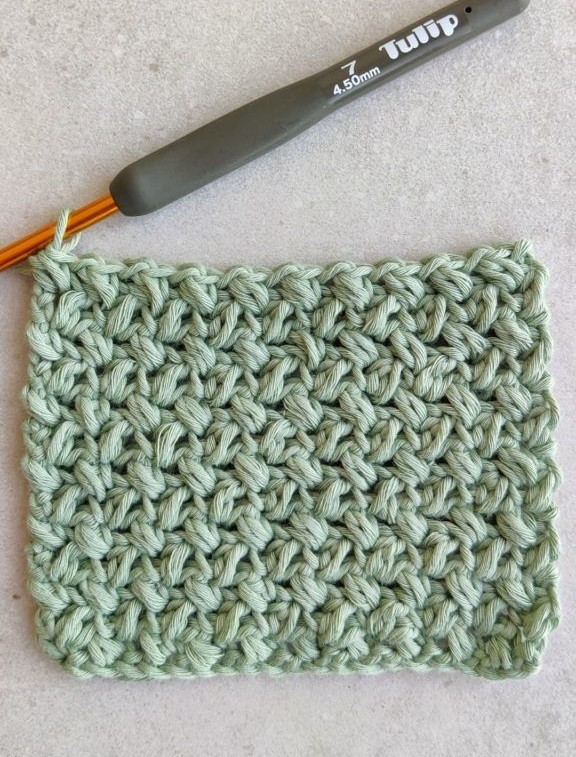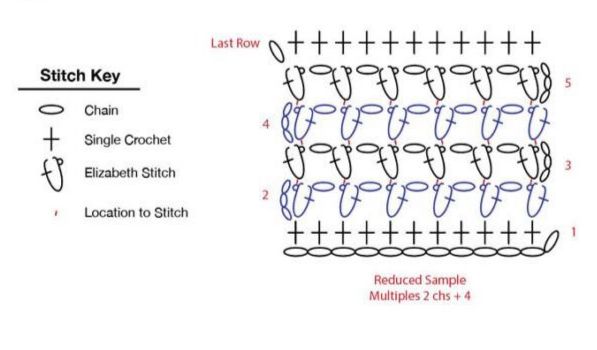Hook (US I-9, 5.5mm crochet hook)
Sissors
Stich markers
Measur tape
Yarn nedle for weaving ends.
Row 1:
Start by making a chain. The number of chains should be a multiple of 2, plus 1 extra chain at the end.
Insert your hook into the 3rd chain from the hook.
Yarn over (wrap the yarn around the hook) and pull up a loop. You should now have 2 loops on your hook.
Yarn over again, then insert the hook back into the same chain stitch you just workd into. Yarn over and pull up another loop. Now, you should have 4 loops on your hook.
Yarn over one more time and pull thru all 4 loops on your hook.
To finish the Mini Bean Stich, chain 1.
Skip the next chain and put your hook into the follwing chain. Yarn over and pull up a loop. Yarn over again, put the hook back into the same chain, yarn over once more, and pull up another loop (you should now have 4 loops on the hook). Yarn over and pull thru all the loops on the hook. To finish the stich, chain 1. Repeat this proces untill you reach the end of the row.
Row 2:
Chain 1 and turn your work to start the next row. (Note: You’ll have two chains—one for the turning chain and another to close the stich.)
*Insert your hook into the side of the next stich. (This is the small space next to the stich you worked in the previos row.)
Yarn over and pull up a loop.
Yarn over again, insert the hook into the same space, yarn over, and pull up another loop. (You should now have 4 loops on your hook.)
Yarn over and pull thru all the loops on the hook.
Chain 1 to close the stich.*
Repeat from * to the end of the row.
Continue:
Repeat Row 2 untill you have your desird lenght.

The Mini Bean Stitch, or Elizabeth Stitch, is the perfect combination of simplicity and elegance. Once you get the rhythm of the loops and chains, it becomes almost meditative to work row after row. Whether you’re making a cozy throw, a textured scarf, or even a modern dishcloth, this stitch brings beauty and functionality together.
Don’t be afraid to experiment with different yarn weights or color combinations. A chunky yarn will give your fabric a bold, dramatic texture, while finer yarns create a delicate and soft result. Each variation will highlight the “bean” clusters in its own unique way.
Now that you’ve learned this versatile stitch, you can incorporate it into your future crochet projects with confidence. The Mini Bean Stitch is not only beginner-friendly but also a timeless technique that will remain a favorite in your crochet journey.

